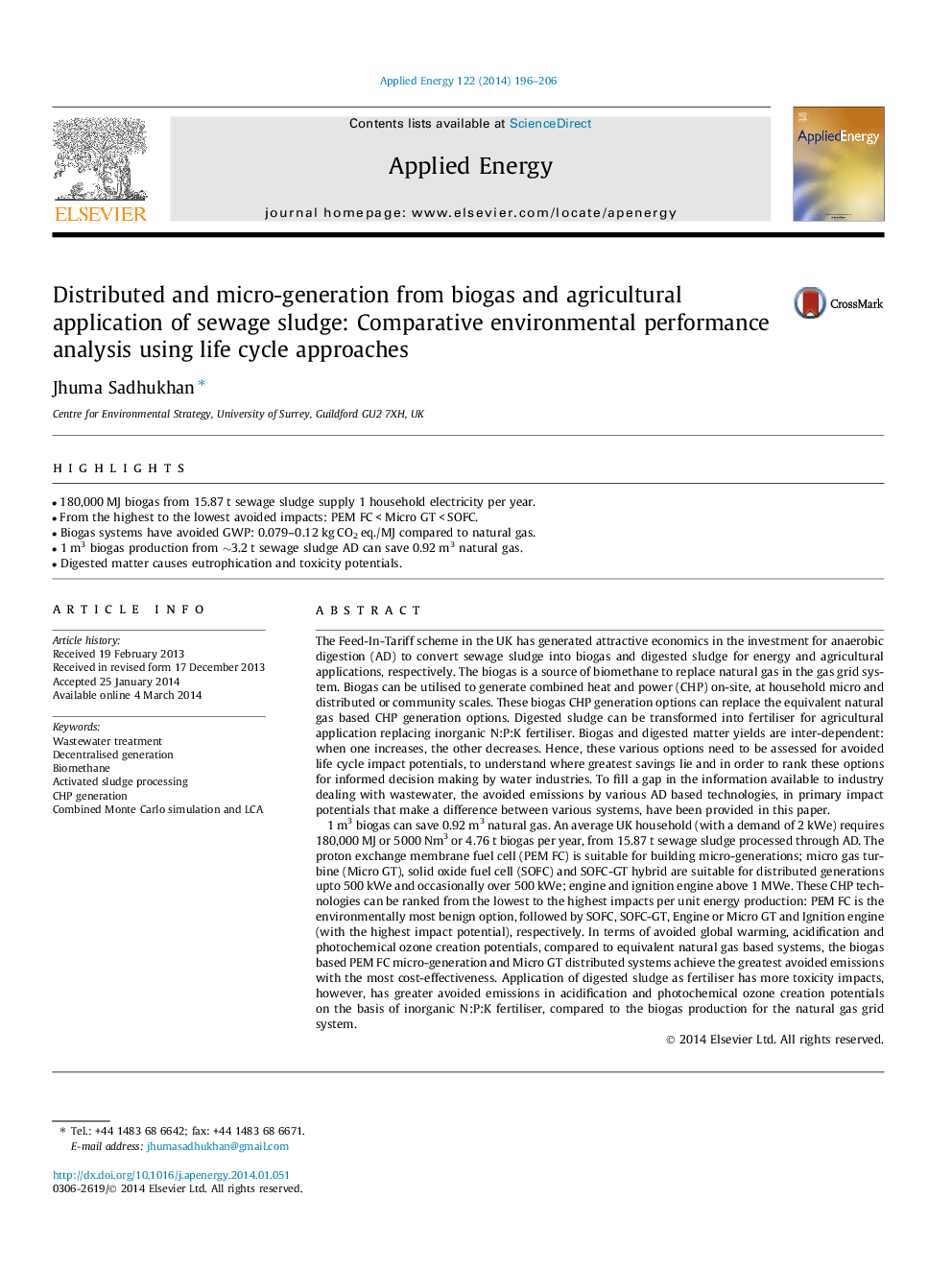| کد مقاله | کد نشریه | سال انتشار | مقاله انگلیسی | نسخه تمام متن |
|---|---|---|---|---|
| 6690597 | 501901 | 2014 | 11 صفحه PDF | دانلود رایگان |
عنوان انگلیسی مقاله ISI
Distributed and micro-generation from biogas and agricultural application of sewage sludge: Comparative environmental performance analysis using life cycle approaches
ترجمه فارسی عنوان
توزیع و تولید میکرو از بیوگاز و استفاده از لجن فاضلاب کشاورزی: تجزیه و تحلیل عملکرد سازگار با محیط زیست با استفاده از روش های چرخه عمر
دانلود مقاله + سفارش ترجمه
دانلود مقاله ISI انگلیسی
رایگان برای ایرانیان
موضوعات مرتبط
مهندسی و علوم پایه
مهندسی انرژی
مهندسی انرژی و فناوری های برق
چکیده انگلیسی
1Â m3 biogas can save 0.92Â m3 natural gas. An average UK household (with a demand of 2Â kWe) requires 180,000Â MJ or 5000Â Nm3 or 4.76Â t biogas per year, from 15.87Â t sewage sludge processed through AD. The proton exchange membrane fuel cell (PEM FC) is suitable for building micro-generations; micro gas turbine (Micro GT), solid oxide fuel cell (SOFC) and SOFC-GT hybrid are suitable for distributed generations upto 500Â kWe and occasionally over 500Â kWe; engine and ignition engine above 1Â MWe. These CHP technologies can be ranked from the lowest to the highest impacts per unit energy production: PEM FC is the environmentally most benign option, followed by SOFC, SOFC-GT, Engine or Micro GT and Ignition engine (with the highest impact potential), respectively. In terms of avoided global warming, acidification and photochemical ozone creation potentials, compared to equivalent natural gas based systems, the biogas based PEM FC micro-generation and Micro GT distributed systems achieve the greatest avoided emissions with the most cost-effectiveness. Application of digested sludge as fertiliser has more toxicity impacts, however, has greater avoided emissions in acidification and photochemical ozone creation potentials on the basis of inorganic N:P:K fertiliser, compared to the biogas production for the natural gas grid system.
ناشر
Database: Elsevier - ScienceDirect (ساینس دایرکت)
Journal: Applied Energy - Volume 122, 1 June 2014, Pages 196-206
Journal: Applied Energy - Volume 122, 1 June 2014, Pages 196-206
نویسندگان
Jhuma Sadhukhan,
